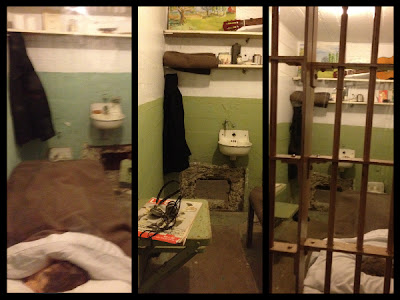Hearst excelled at journalism in college, so when his father gained a newspaper as payment for a gambling debt, he persuaded his father to turn it over to him. This began a successful career in the newspaper business. Shortly after he acquired the New York Journal, and at the height of his career he owned 24 successful newspapers. He also began a line of magazines currently known as Hearst Magazines.
A try at politics was a short success, so he then ventured into radio and film. He was a serious producer of movie newsreels. He is also credited with creating the comic strip syndication business. King Features Syndicate is still today the largest distributor of comics in the world.
I have discovered lots of interesting stories as I researched Hearst Castle. Just recently on the news was a story about Hearst and “Citizen Kane”. It appears the Hearst was offended by the movie and refused to advertise it in any of his newspapers. The movie, “Citizen Kane” is the unflattering portrait of a character resembling Hearst, a sensationalistic newspaper tycoon with political ambitions, a young mistress in show business, a jaw-dropping mansion and an insatiable zeal for collecting art”. A showing of the movie at Hearst Castle was arranged in March 2012 to end this idea. Hearst’s great-grandson claims the event will present the film as a work of fiction rather than as a documentary about the life of Hearst. “It’s a great opportunity to draw a clear distinction between W.R. and Orson Welles, between the medieval, gloomy-looking castle shown in ‘Citizen Kane’ and the light, beautiful architecturally superior reality”.

Wow is the appropriate term for describing Hearst Castle!
The second largest castle in the United States, and exceptionally beautiful! Hearst
decided to build his “castle” on what was the family camping site at their
ranch when he was young. He told his architect, Julia Morgan, that he wanted something a
little nicer than a tent. It took approximately 28 years to create what is
there now. The architect, from San Francisco was chosen because she had studied
in Europe and studied concrete reinforced structure which was important for a
home in California (which was put to the test in 2003 with a quake that
registered 6.5 on the Richter Scale).
After 28 years, the structure was said by Hearst to be only half way
through.
The ride up the mountain to the castle was quite an
entertaining ride, as Alex Trebeck, describes the workings of the ranch as it
was and is now. The area surrounding the castle is considered the ranch.
Everyone in our group was scheduled to take the Grand Tour,
but then we had an option for the second tour. I chose the Kitchen &
Cottages tour and was not disappointed! We started in the wine cellar which was
very large. It was interesting that Hearst believed it okay to partake but not
to overindulge. If you did you were not
invited back. What his friends did not understand was that he was trying to
protect his girlfriend, Marion Davies who bordered on being an alcoholic.
Next we proceeded to what was considered the “small”
cottage. As we entered, we saw them repairing a statue with broken fingers. It
was primarily for guests and had 4 bedrooms. Hearst believed that each
individual should have their own bathroom so throughout the house there is one
attached to each bedroom. The view from
this is beautiful! This is the cottage Winston Churchill stayed in when he
visited and Bob Hope and his wife stayed in during their honeymoon.
Our next stop was the cottage that Hearst himself eventually
moved into and stayed in until his heart attack, where he then decided to move closer to a hospital. It had one of the most beautiful views of all
the cottages! Looking out towards the ocean it was breathtaking! The cottages had
lots of antiquities and influence from Spain and Italy.
Then we went to the kitchen! Every woman’s dream would be to
have a large kitchen like this, well that is if they like to cook. There was a
very large prep area, with a kitchen behind it.
Everything in the house was fully electric, and the kitchen was no
exception.
Our next tour was the Great Rooms tour but we had about 20
minutes so we explored on our own and found the Neptune Pool! What a glamorous
inviting place to swim! The grounds were exceptionally beautiful
The Great Rooms included a formal living room, a dining room,
and the movie room. The living room was a combination of influences from Spain,
Italy, and France.
The dining area has hosted meals to such celebrities as
Clark Gable, Charlie Chaplin, Joan Crawford, George Bernard Shaw, Calvin
Coolidge, Cary Grant, and Amelia Earhart.
For entertainment there was the billiard room and the movie room. Lots of entertaining took place in these rooms. In them movie room, it could be a movie produced by Hearst or possibly a
movie one of the guests starred in. However, it would NOT have been the movie
Citizen Cane.
The final stop before getting on the bus was the Roman Pool.
It was an indoor pool below the tennis courts.
Another awe inspiring creation!
We finished our visit there by having lunch in which the
beef came from the ranch itself!
















































